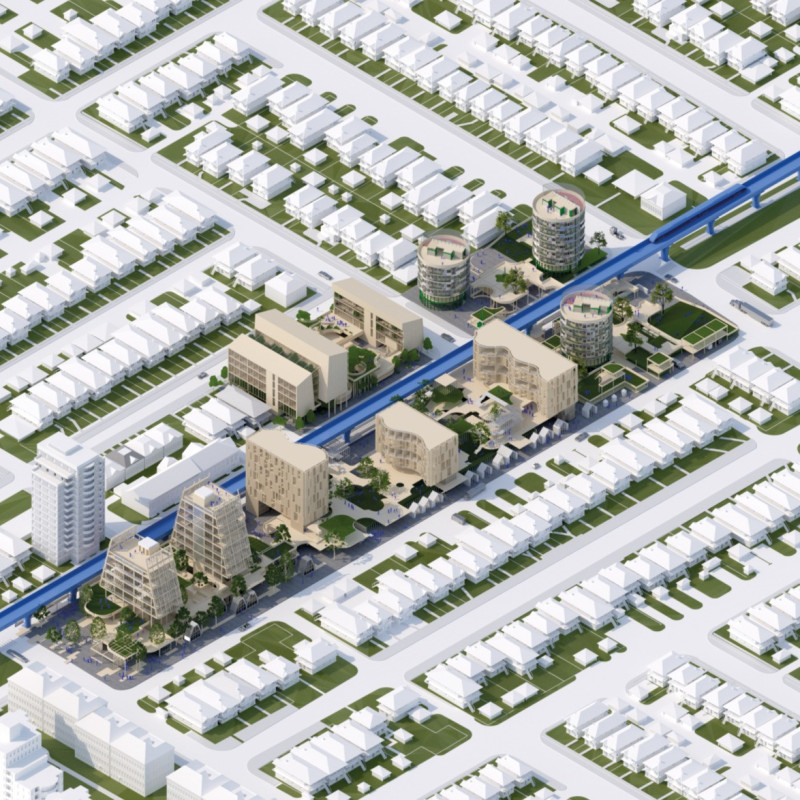5 key facts about this project
One of the key characteristics of this project is its focus on mixed-use development strategically positioned around existing infrastructure such as the Skytrain. This positioning not only enhances accessibility for residents but also encourages a vibrant community atmosphere. The layout incorporates various housing typologies, including adaptable units that can accommodate a diverse demographic, catering to families, singles, and couples alike. Furthermore, the design explicitly addresses issues of noise and privacy through thoughtful spatial orientation and the inclusion of shared communal areas.
Architectural Innovation in Space Utilization
A significant aspect of "The Suburban Nightmare" is its emphasis on modular architecture. The arrangement of the buildings fosters interconnectivity and utilizes space efficiently, breaking down the conventional block structure typically seen in suburban designs. Courtyards and outdoor spaces are integrated into the design, facilitating social interaction among residents while enhancing the aesthetic quality of the environment. Features such as balconies, terraces, and green roofs serve both functional and ecological purposes, inviting natural light and promoting biodiversity.
The project stands apart by adopting adaptive housing principles, offering flexible residential units that can evolve with the needs of the occupants over time. This unique approach not only increases the longevity of the buildings but also reinforces the community concept by creating a more active urban life. The integration of shared facilities, including community gardens and recreational spaces, encourages residents to engage and fosters a sense of belonging.
Sustainable Design Initiatives
Sustainability is at the core of the architectural philosophy guiding "The Suburban Nightmare." The use of eco-friendly materials, such as reinforced concrete for structural elements alongside ample glazing, contributes to energy efficiency. The design of living walls and green roofs further enhances the ecological footprint of the project, improving air quality and promoting local flora and fauna. These sustainable design initiatives not only address environmental concerns but also enhance the overall livability of the space.
The architectural plans and sections reveal the project's commitment to creating a balance between urban density and community space. This careful consideration of design elements underscores an urgent need to redefine suburban living for contemporary society. As urbanization continues to challenge traditional norms, examining the architectural designs and ideas behind this project offers valuable insights into modern residential development.
For a deeper understanding of the specific architectural elements and the comprehensive strategies employed throughout the project, interested readers are encouraged to explore the full project presentation, including architectural sections, plans, and detailed designs.























